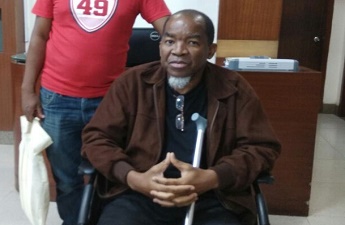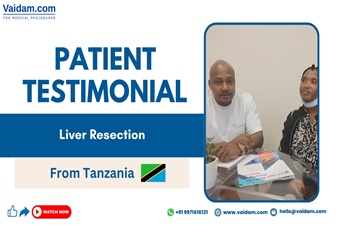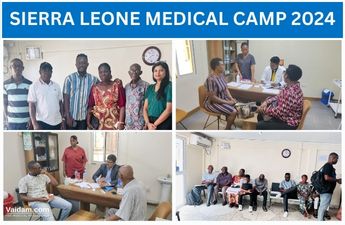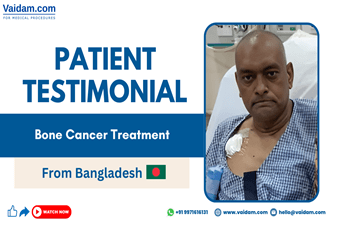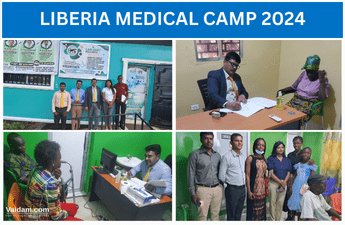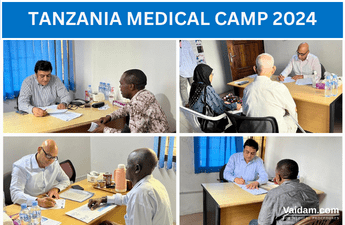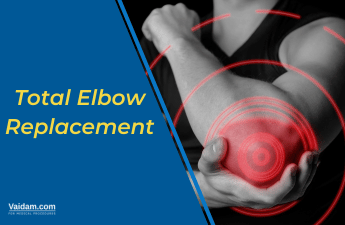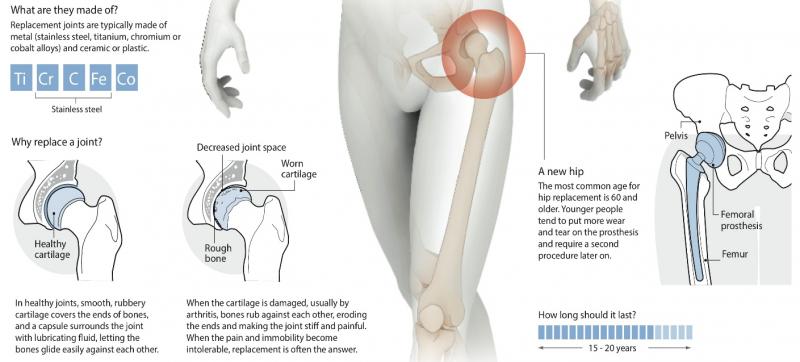
Hip replacement surgery also called total hip arthroplasty is a surgical procedure in which a damaged or worn out hip joint is replaced with an artificial joint (known as a prosthesis) made of metal and plastic components. This artificial joint (prosthesis) helps in reducing pain and improves the functioning of the joint, making walking easier.
Get in Touch with Medical Experts
What are the signs that you need a hip replacement?
Hip joint replacement is required if one (or both) of the hip joints gets damaged causing persistent pain or problems with daily activities such as walking, driving and getting dressed. There are a number of conditions which can lead to chronic hip pain and disability, leading to replacement. Of all the conditions, this surgery is mostly a preference after a hip fracture or for severe pain due to arthritis.
Common reasons causing damage to hip joint are:
-
Osteoarthritis, known as wear-and-tear arthritis is a degenerative joint disease that is seen with aging, congenital abnormality of the hip joint, or prior trauma to the hip-joint. It occurs when cartilage present on
-
the end of bone begins wearing away, leading to pain and stiffness. When the cartilage wears off completely, the bones rub directly against each other causing decreased mobility and chronic pain
-
Rheumatoid arthritis is an autoimmune disease, in which the synovial membrane becomes inflamed. This membrane then produces excessive synovial fluid, damaging the articular cartilage.
-
Traumatic arthritis results from a serious hip injury or fracture. The articular cartilage becomes damaged and, over time, causes hip pain and stiffness.
-
Osteonecrosis. If there is inadequate blood supply to the ball portion of the hip joint, the bone may collapse and deform.
-
Hip fracture, broken hips, types of hip conditions that had appeared in childhood such as developmental dysplasia, congenital dislocation of hip and Perthes disease can also lead to degeneration many years after an injury and require the need for hip replacement surgery
What are the criteria for a hip replacement?
Generally, any person can be a suitable candidate for a hip replacement. Candidates for this surgery are not categorized by age, class or activity level. Most of the patients are between the ages of 60 and 80, but the surgery isn't confined to elderly patients.
Hip replacement surgery is considered if a patient is experiencing hip pain:
-
Persists, in spite of having pain medication.
-
Worsens with walking, even with a cane or walker
-
Interferes with sleep
-
Affects the ability to go up or down stairs
-
Makes it difficult to rise from a seated position
Not recommended for candidates:
A hip replacement is not recommended for people who are having serious health conditions. It is not
-
Severe Osteoporosis, because bones may be too brittle to properly support and adhere to the new joint prosthesis
-
Not able to follow the pre & post-surgical instructions. For example, a person suffering from dementia or alcoholism is not recommended.
-
Any patient suffering from an existing infection or patients who are prone to infection are also not eligible for this surgery. As these patients are at a high risk of postoperative complications.
-
Nicotine users
What is the best hip replacement procedure?
Surgery can be performed under general anesthesia (where the person is asleep during the procedure) or an epidural (where the lower body is numbed). Surgery can take 60-90 minutes to complete.
Before the surgery patient’s vital signs are checked to make sure blood pressure, heart rate, body temperature, and oxygenation levels are normal, so the surgery can be started. A mark is made on the hip undergoing surgery.
The surgeon then makes an incision into the hip, removes the damaged cartilage and bone and then implants the prosthetic joint. The new joint may require cement or other hardware such as screws to hold it in place. Surgical procedures differ depending on the patient’s needs and the surgeon’s approach, but generally, the steps are as follows:
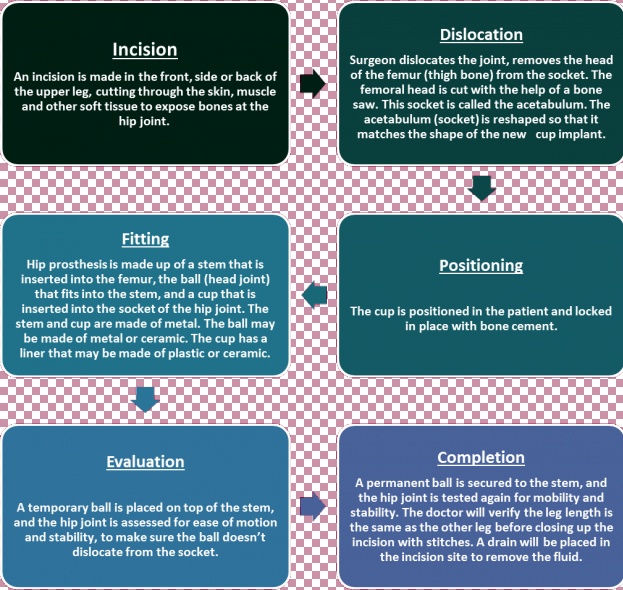
Useful Reads:
- Best Hip Replacement Surgeons in India
- Best Orthopedic Hospital in India
- Cost of Bilateral Hip Replacement
- Hip Replacement Surgery Cost in India
Hip replacement cost in India is around 4,000 USD while in the USA it is 30,000 USD. There is a huge difference in price and the success rate is also 99%. This is the reason India is a major destination for hip replacement surgery. Patients can find the best orthopedic hospitals that provide high international standard services. The best hip replacement surgeons of India are popular worldwide for providing high-quality medical services.
What can I expect after hip replacement surgery?
Recovery can take several weeks or months, depending on the patient's health and age. . There are several factors contributing to the recovery after this surgery. Most hip implants are expected to last from 10 to 20 years, and these implants will naturally wear down with age.
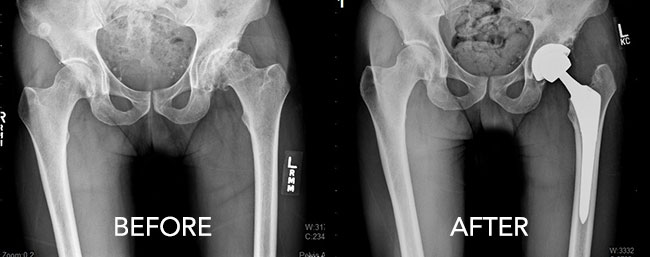
Short-term recovery:
This involves the early stages of recovery that is the ability to get out of the hospital bed and be discharged from the hospital. After the surgery, the patient will be shifted to the recovery room for observation. Once the patient’s (vitals) blood pressure, pulse, and breathing are stable and the patient is alert, the patient will be shifted to his hospital room. Hip replacement surgery usually requires hospitalization of 4-5 days, but this will depend on the patient’s progress.
Physical therapy: within the first six weeks is very important. This is important to help strengthen the hip joint. It is recommended to do small exercises such as contracting and releasing the muscles of your legs and buttocks and ankle pumps. It is also very important to restrict hip movement.
Post-hospital care
Once the patient is back home, it is very important to follow the doctor’s instructions during the first few weeks after surgery.
Caring for the incision:
The incision is closed with staples, which will be removed around 14 days after the surgery. It is important to keep the surgical area clean and dry. Specific bathing instructions will be provided to the patient.
Physical Activity:
Physical activity is an essential part of recovery.
-
Within three to six weeks, the patient should be able to resume most of their day to day activities.
-
Using stairs can be dangerous and should be avoided any help is not present.
-
Devices recommended for support include a cane, crutches, walker and handrails.
-
Six weeks after surgery, when full hip movement is regained, driving can be started.
Follow-up:
During the first year of the surgery, routine follow-up visits are scheduled with an orthopedic surgeon. After that annual visits will be required to assess the status and function of the implant.
The doctor should be informed if the patient reports any of the following symptoms:
-
Fever
-
Redness, swelling, bleeding, or another drainage from the incision site
-
Increased pain around the incision site
-
Numbness and/or tingling in the affected leg
-
A limp, or problem while walking
-
Grinding or clunking from the hip
What are the complications of total hip replacement?
Hip replacement surgery, like any other surgical procedures, carries a risk of complications. Revision surgery may be suggested if any complication occurs. Complications from hip replacement surgery include:
-
Infection
-
Blood clots
-
Unequal leg lengths
-
Loosening & implant wear
-
Stiffness in joint
-
Fracture & dislocation
-
Blood vessel injury
-
Nerve damage
-
Metal sensitivity
FAQs
-
Are there alternatives to hip replacement surgery?
-
Hip replacement surgery is often the last resort for patients. Before going for the surgery the doctor may suggest methods including exercise, walking aids, and medication.
-
How should a patient prepare for a hip replacement?
-
Low impact cardio exercises are a good way to prepare for hip replacement surgery. It is good to consider using an exercise bike, doing water aerobics or swimming. All these exercises helpful in surgery preparation and they can also improve the symptoms of arthritis.
-
What is a dislocation of the hip?
-
Dislocation of the hip occurs when the femoral head (ball) comes out of the acetabulum (socket).
-
Why do hip replacements fail?
-
The most common reason for failure is a loosening of the artificial ball where it is secured in the femur or loosening of the socket. Wearing of the plastic spacer may also result in the need for revision.
-
What is Revision Surgery?
-
Revision surgery is performed when a failed hip implant can only be repaired by another surgery. Failure can stem from normal wear and tear or from a faulty device. These second procedures are considered complex and significantly invasive.
-
Will a patient require a blood transfusion?
-
A blood transfusion may be required after the surgery.
-
How long and where will my scar be?
-
The scar will be approximately 6–8 inches long. It will be along the side of your hip.
-
When can a patient discontinue using a raised toilet seat after the surgery?
-
A patient can discontinue using a raised toilet seat between 6 and 10 weeks after the total hip replacement operation.
-
From when can the patient sleep on his operative site after a hip replacement?
-
The patient can sleep on your operative side whenever they feel comfortable. They may sleep on their non-operative side at 4 weeks with a pillow between their knees.
-
For how long a patient needs to have a bandage after the surgery?
-
The bandage is required for approximately 1 week after total hip replacement surgery. This should be changed daily to a new dry, sterile gauze. If required a patient may continue to wear a bandage to protect the incision from irritation.
-
When can the hip be immersed in water (e.g. bathing swimming pool, tub) after the surgery?
-
The hip can be immersed in water after 2 weeks if there is no drainage from the incision site.
-
Can weights be used after the surgery?
-
Usually, weights should not be used for the first 2 months after total hip replacement surgery. Still, everyone's strength varies & it should be consulted by the physical therapist before starting with weights.
-
Can a person set off the machines at the airport security after the surgery & is a doctor note required?
-
A patient set off the machines at airport security depending on the type of hip implant the patient has and the sensitivity of the security checkpoint equipment. At the follow-up visit, the patient may ask to have a wallet card to carry while traveling.
-
What activities are permitted following the surgery?
-
A patient may return to most of the activities which can be tolerated by him after total hip replacement surgery. This including walking, gardening, and golf. Some of the best activities to help with motion and strengthening are swimming and a stationary bicycle.
-
What activities should be avoided after the surgery?
-
The activities that should be avoided are, impact activities, such as running and downhill skiing on expert slopes, and vigorous racquet sports, such as singles tennis or squash.
-
For how long this hip replacement will last?
-
It is expected that most hips last for more than 10–15 years. But still, this varies from patient to patient.
-
Can a patient kneel after this surgery?
-
Yes, a patient can kneel 6 weeks after total hip replacement surgery. To kneel, touch down with the operative knee first. To arise from kneeling, use the non-operative leg first.












